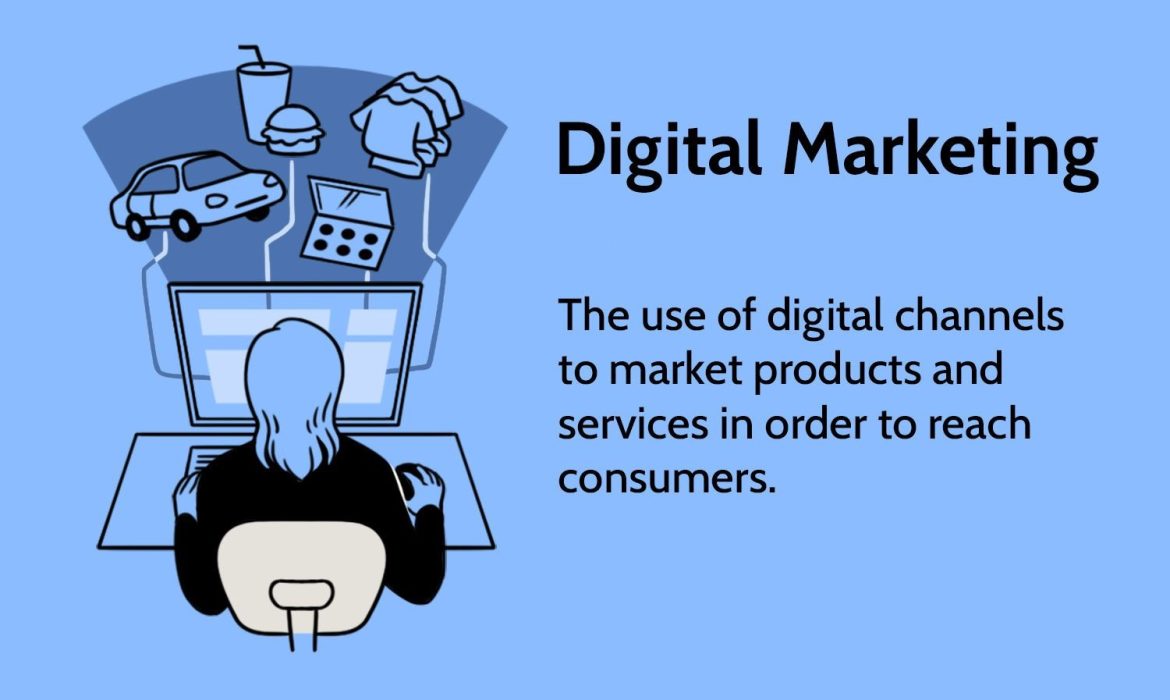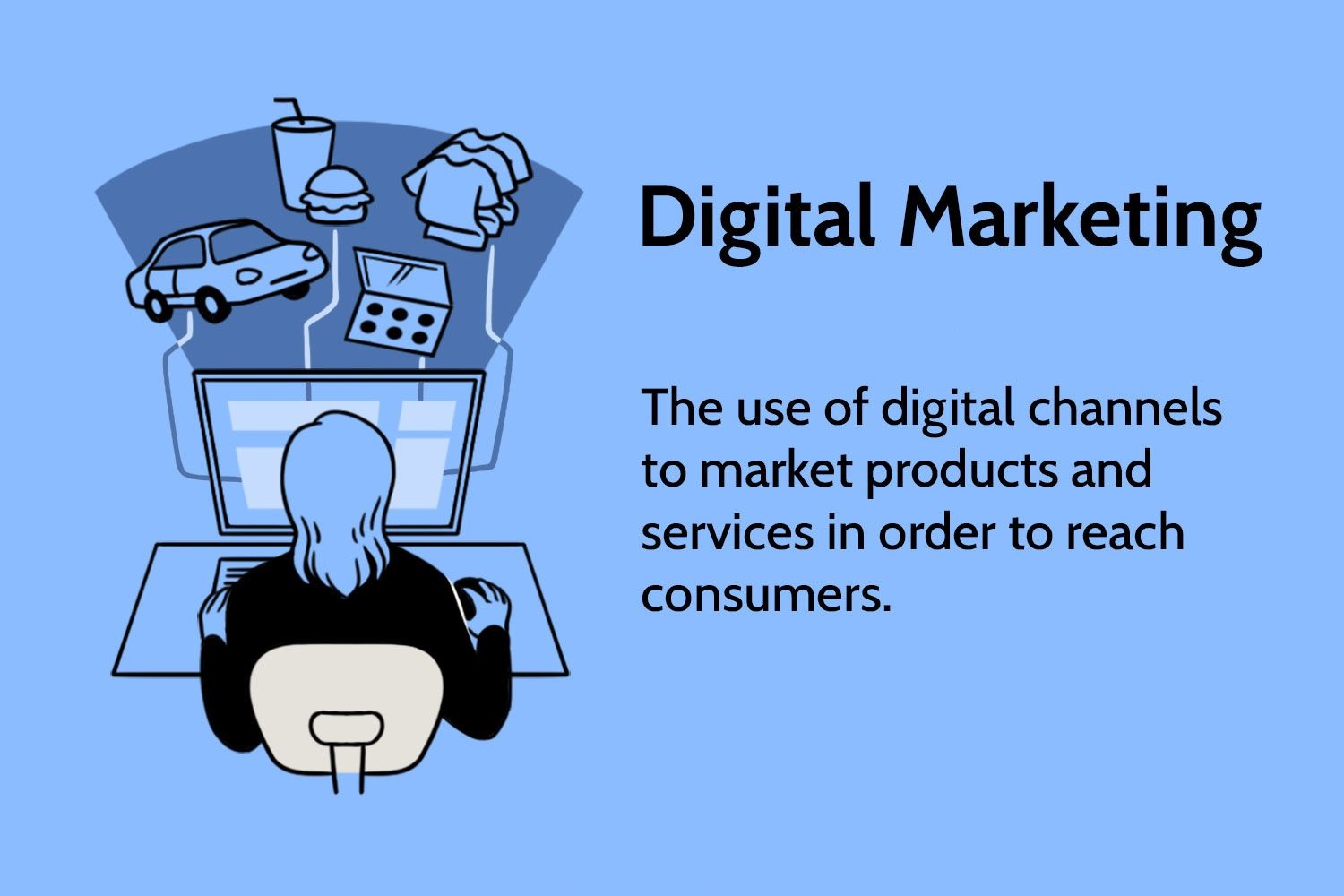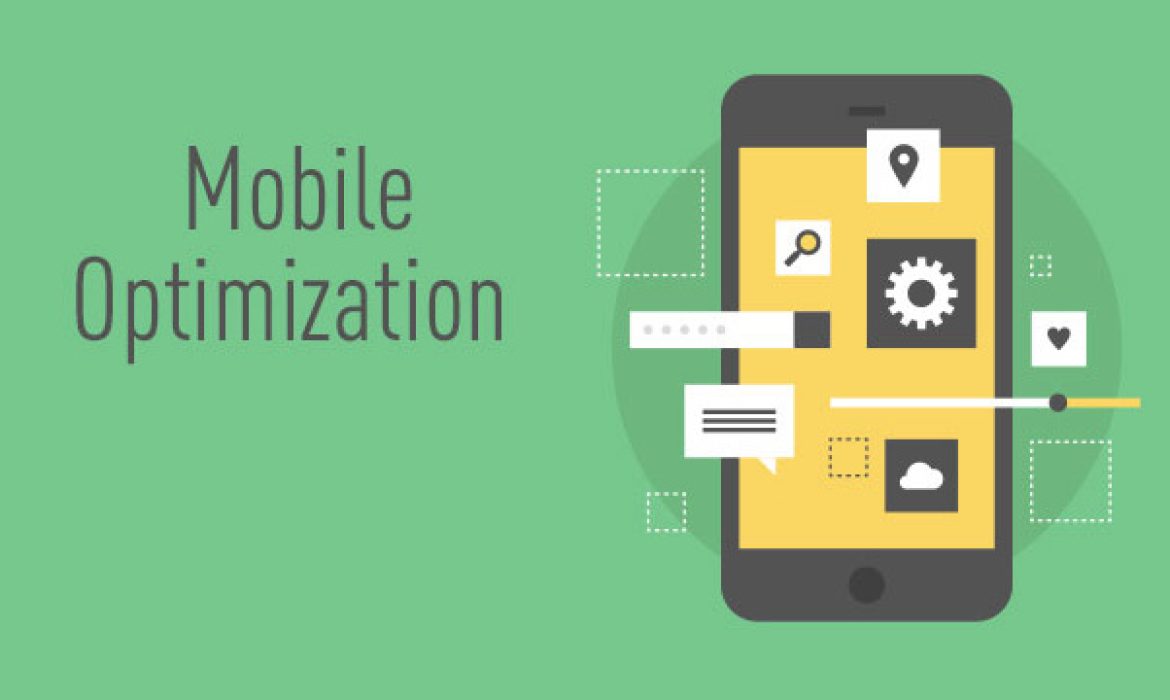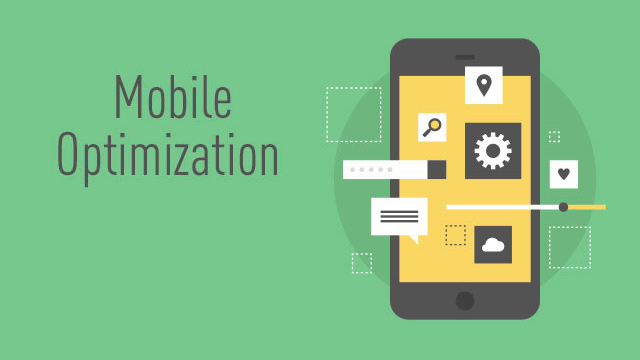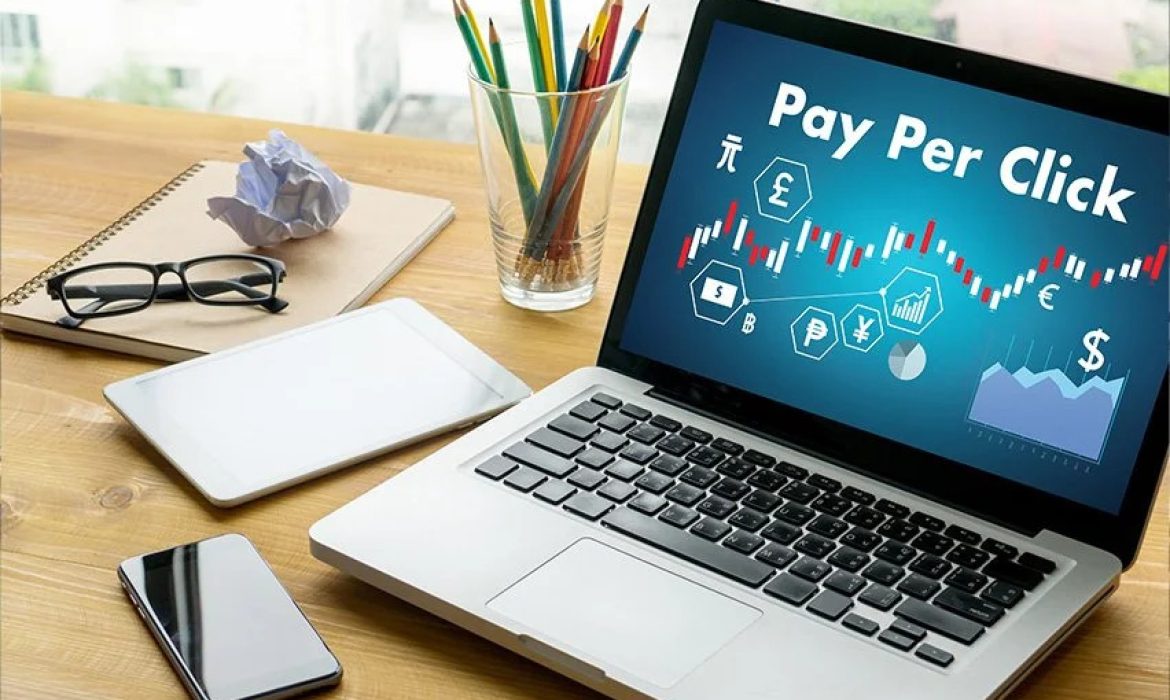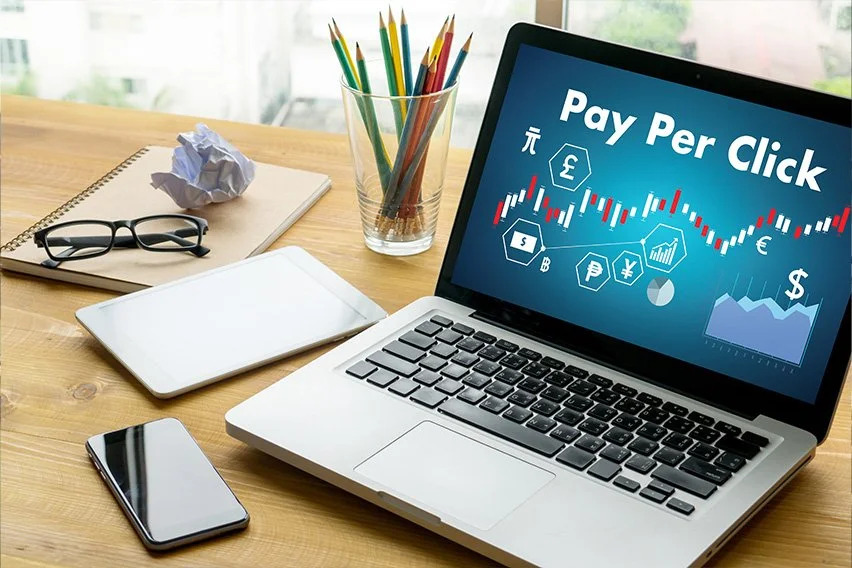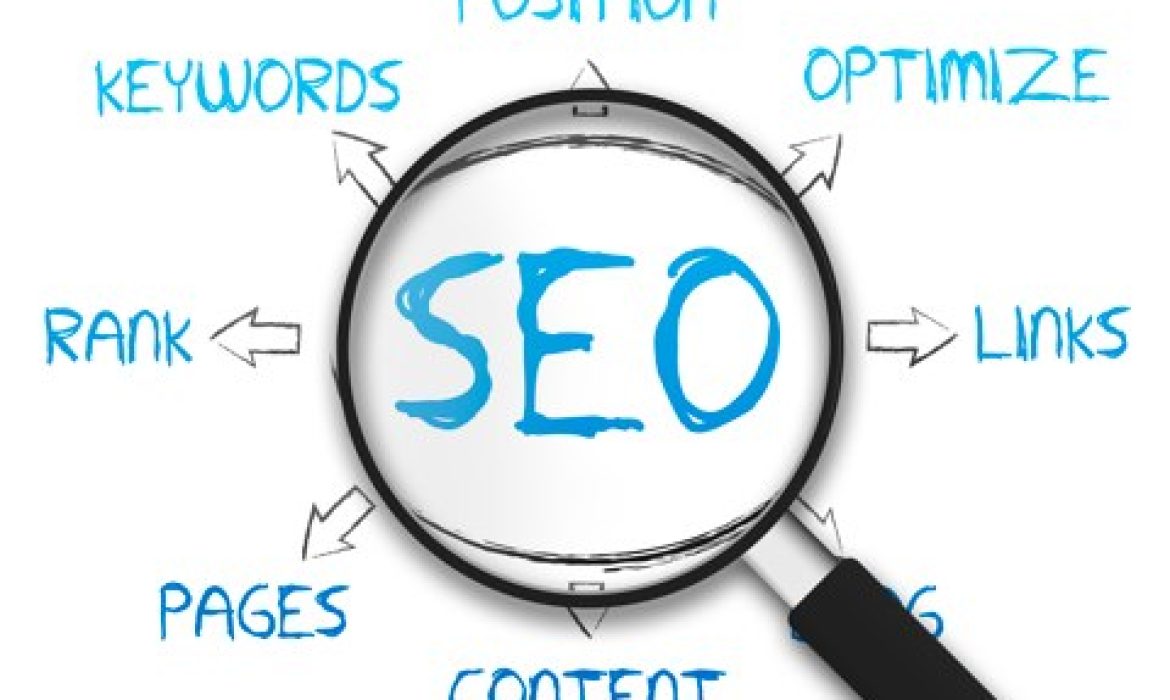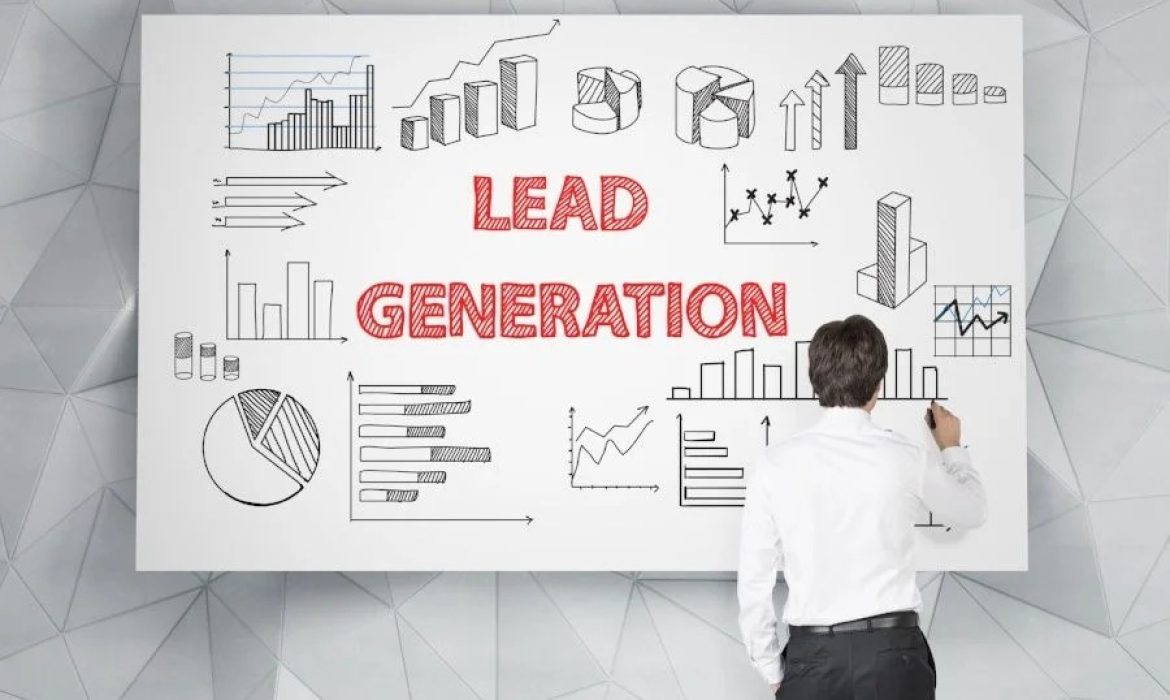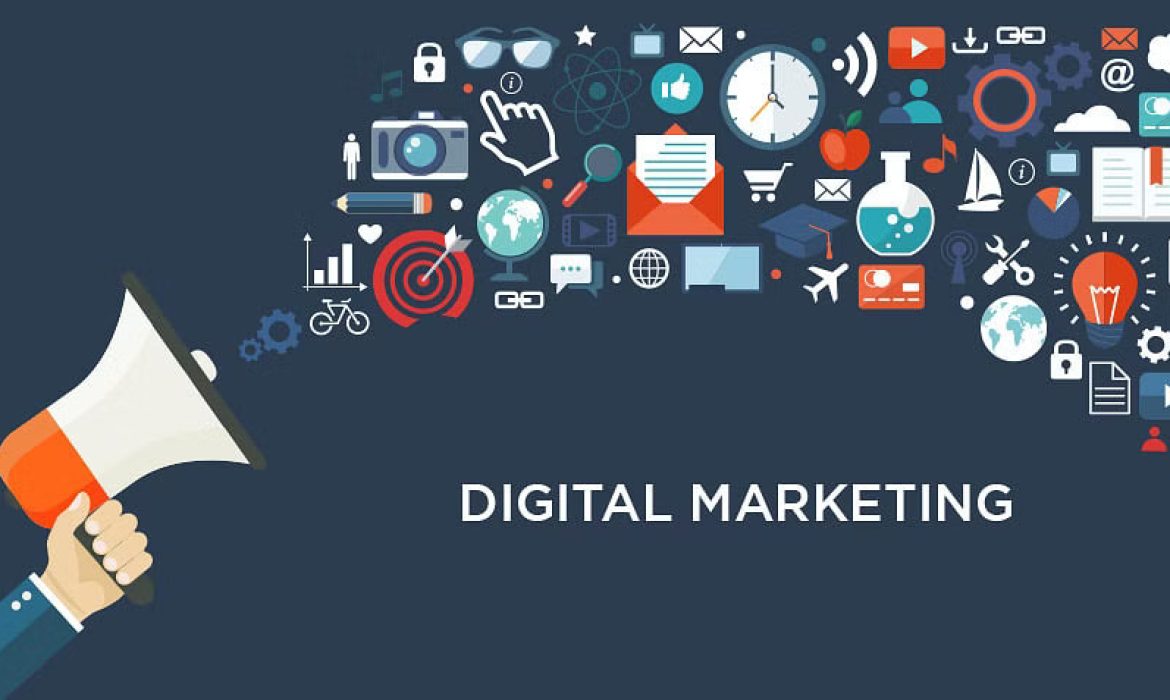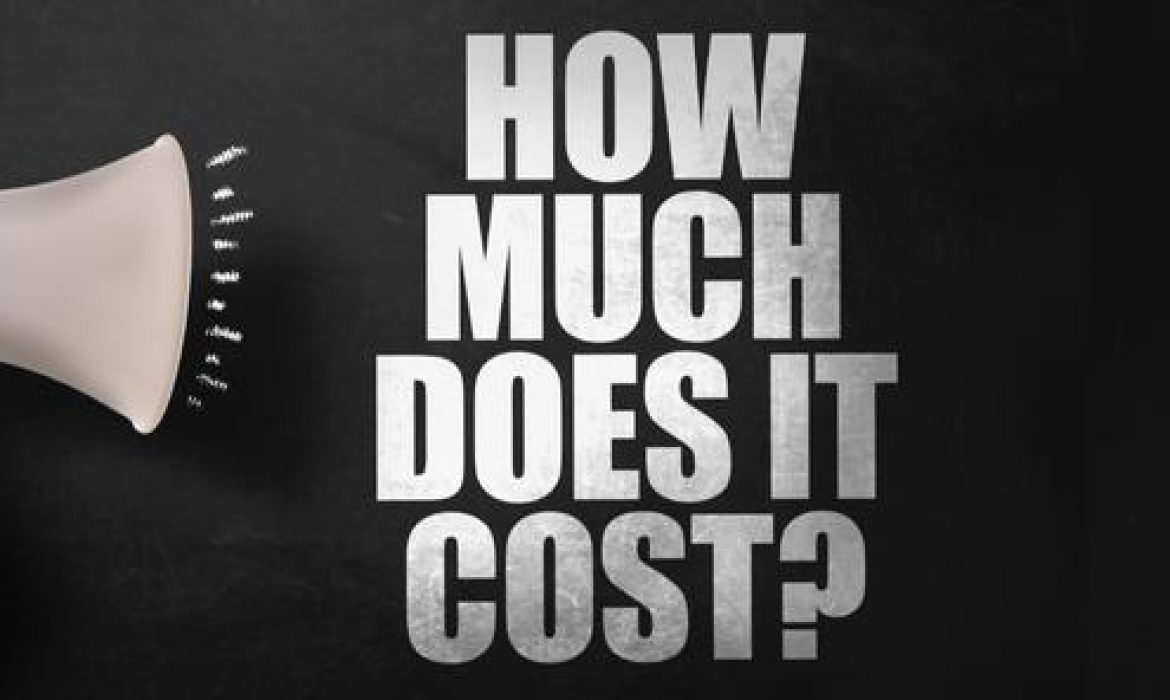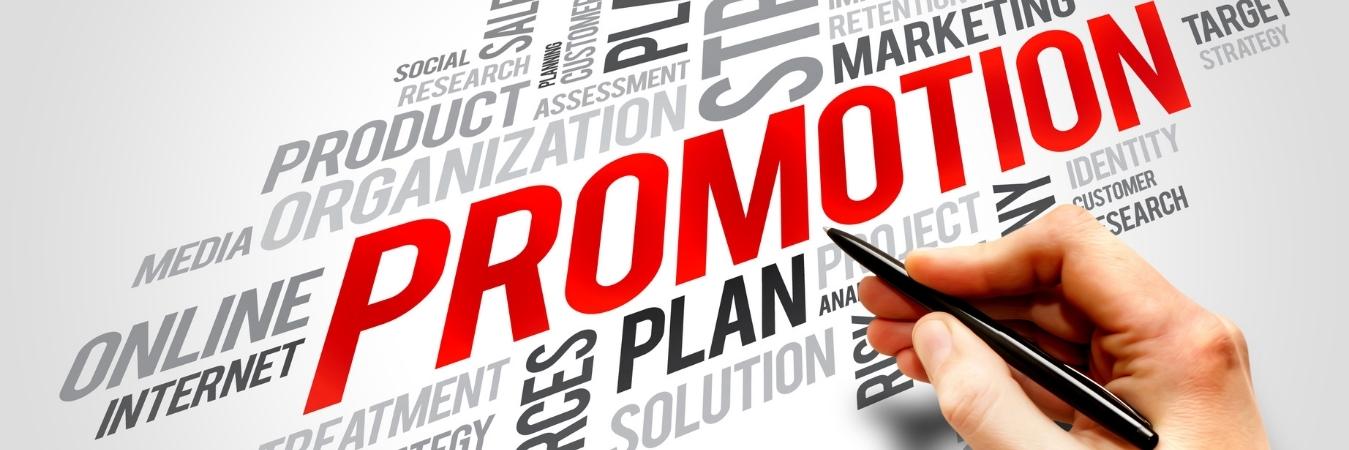Creating Engaging Content for Digital Marketing: Unlocking the Power of Connection
Content for Digital Marketing: In today’s digital landscape, creating engaging content is paramount for successful digital marketing campaigns. It’s no longer enough to simply have a presence online; you must capture the attention and interest of your target audience.
By understanding the power of connection and employing effective strategies, you can create content that resonates with your audience, drives traffic, and boosts conversions. In this article, we will explore the key elements and techniques for crafting captivating content that leaves a lasting impact.
Understanding Your Audience:
To create content that engages your audience, you must first understand who they are. Keywords such as “target audience,” “consumer insights,” and “demographics” play a crucial role in this process. By conducting thorough research and analysis, you can gain valuable insights into your audience’s preferences, interests, and pain points. Armed with this knowledge, you can tailor your content to address their specific needs and desires.
Crafting Captivating Headlines:
The headline is the first point of contact between your audience and your content. It needs to be compelling, intriguing, and keyword-rich. Keywords like “attention-grabbing,” “enticing,” and “click-worthy” can help you create headlines that draw readers in. Additionally, incorporating numbers, asking questions, or using power words can make your headlines stand out even more.
Telling a Story:
Humans are hardwired to respond to stories. By incorporating storytelling into your content, you can tap into the emotional aspect of your audience’s decision-making process. Keywords like “narrative,” “emotional connection,” and “relatable characters” are essential when discussing this technique. Use storytelling to illustrate how your product or service can solve problems or enhance the lives of your audience, making it more relatable and memorable.
Utilizing Visual Content:
Visuals have the power to captivate and convey messages quickly. Keywords like “infographics,” “videos,” and “images” are vital for this section. Incorporate eye-catching visuals that align with your brand and content. Infographics can present complex information in a digestible format, while videos can showcase your product or provide informative demonstrations. Images that evoke emotions and support your message will also enhance the overall appeal of your content.
Encouraging User Interaction:
Engagement is key to successful with the help of digital marketing agency. Keywords such as “comments,” “likes,” and “shares” emphasize the importance of user interaction. Encourage your audience to participate by asking questions, soliciting opinions, or creating polls. Prompting users to share their experiences or tagging friends can help expand your reach and foster a sense of community around your brand.
Optimizing for Search Engines:
Keywords like “SEO,” “search engine optimization,” and “organic traffic” are crucial in ensuring your content reaches a wider audience. Incorporate relevant keywords naturally throughout your content, including in headings, subheadings, and meta descriptions. Provide valuable information that answers common search queries. By optimizing your content for search engines, you increase the chances of attracting organic traffic and generating leads.
Providing Value:
Keywords such as “educational,” “informative,” and “problem-solving” highlight the importance of delivering value to your audience. Your content should offer practical advice, insights, or solutions to your audience’s pain points. Demonstrate your expertise and establish trust by providing reliable and relevant information. When readers find value in your content, they are more likely to engage with it and share it with others.
Promoting Across Channels:
Keywords like “social media,” “email marketing,” and “cross-promotion” emphasize the need to promote your content across various channels. Share your content on social media platforms, send it to your email subscribers, and collaborate with influencers or other businesses for cross-promotion. Leveraging different.
The Benefits of Email Marketing: Unlocking the Power of Direct Communication
In today’s digital age, email marketing remains a highly effective tool for businesses to engage with their audience, build relationships, and drive conversions. With its wide reach and personalized approach, email marketing offers numerous benefits that can boost brand awareness, nurture leads, and generate revenue. In this article, we will explore the key advantages of email marketing, highlighting how it can enhance your marketing agency strategy and deliver tangible results.
Enhanced Targeting and Segmentation:
Email marketing allows you to segment your audience based on specific criteria, such as demographics, interests, or purchase history. By utilizing keywords like “targeting,” “segmentation,” and “personalization,” you can create tailored content that resonates with different customer groups. This personalized approach ensures that your messages are relevant and engaging, increasing the likelihood of conversions and customer satisfaction.
Cost-Effective and High ROI:
Compared to traditional marketing channels, email marketing is highly cost-effective. Keywords like “cost-efficient,” “budget-friendly,” and “return on investment” highlight this advantage. With minimal production and distribution costs, email campaigns can reach a large audience at a fraction of the cost of other marketing methods. When executed strategically, email marketing has the potential to generate a high return on investment by driving website traffic, increasing sales, and fostering customer loyalty.
Direct and Immediate Communication:
Keywords such as “direct communication,” “real-time,” and “immediacy” emphasize the power of email marketing to connect with your audience. With email, you can deliver messages directly to your customers’ inboxes, ensuring that your communication is seen and read. This direct line of communication allows for quick responses, immediate action, and timely promotions, enhancing customer engagement and driving conversions.
Increased Customer Engagement and Retention:
Email marketing enables businesses to build and nurture relationships with their customers. Keywords like “customer engagement,” “loyalty,” and “relationship building” underscore this benefit. By delivering valuable content, personalized offers, and exclusive promotions, you can keep your audience engaged and loyal to your brand. Regular communication through email fosters a sense of familiarity and trust, increasing customer retention and lifetime value.
Measurable and Trackable Results:
Keywords such as “analytics,” “metrics,” and “trackable” highlight the importance of measuring the success of your marketing efforts. Email marketing provides robust analytics that allow you to track and evaluate the performance of your campaigns. You can monitor metrics such as open rates, click-through rates, and conversion rates, providing valuable insights into your audience’s behavior and preferences. This data-driven approach enables you to refine your strategies and optimize future campaigns for better results.
Automation and Time Efficiency:
Email marketing platforms offer automation features that streamline your marketing processes. Keywords like “automation,” “time-saving,” and “efficiency” emphasize this advantage. With automation, you can set up targeted email sequences, welcome series, and personalized follow-ups, saving time and effort. By automating repetitive tasks, you can focus on other aspects of your business while ensuring consistent and timely communication with your audience.
Scalability and Reach:
Keywords like “scalable,” “expansion,” and “wide reach” underline the ability of email marketing to adapt to the growth of your business. Whether you have a small startup or a large enterprise, email marketing can accommodate your needs. With a growing subscriber list, you can reach a wider audience, spread brand awareness, and expand your customer base. As your business scales, email marketing provides a flexible and efficient channel to nurture leads and convert prospects into loyal customers.
Also Read —>> Mobile Optimization in Digital Marketing
Email marketing continues to be a powerful tool for businesses seeking to connect with their audience on a personal level. Through enhanced targeting, cost-effectiveness, direct communication.
The Importance of Mobile Optimization in Digital Marketing
Mobile Optimization in Digital Marketing: In today’s fast-paced digital world, where smartphones have become an integral part of our lives, it’s crucial for businesses to adapt and optimize their online presence for mobile devices. Mobile optimization plays a vital role in digital marketing, allowing companies to reach and engage with their target audience effectively. In this article, we will explore the significance of mobile optimization in driving online success and maximizing customer satisfaction.
Mobile Optimization in Digital Marketing
Enhancing User Experience: Mobile optimization is all about creating a seamless user experience for visitors accessing your website or digital platforms through mobile devices. With the majority of internet users now browsing on their smartphones, it is essential to ensure that your website is responsive and loads quickly on mobile devices. By implementing mobile optimization techniques, you can provide users with a visually appealing, easy-to-navigate, and fast-loading mobile experience.
Capturing Mobile Traffic: With the rapid growth of mobile usage, businesses have an immense opportunity to tap into the vast pool of mobile traffic. Mobile optimization helps your website rank higher in mobile search engine results pages (SERPs). Google and other search engines prioritize mobile-friendly websites, rewarding them with better visibility. By optimizing your site for mobile devices, you increase your chances of capturing mobile traffic and driving more visitors to your digital assets.
Boosting Conversion Rates: Effective mobile optimization directly impacts conversion rates. Mobile users have different behavior patterns and expectations compared to desktop users. A poorly optimized website may deter visitors and result in higher bounce rates. On the other hand, a mobile-optimized website offers a seamless experience, encouraging users to explore further and take desired actions, such as making a purchase, subscribing to a newsletter, or filling out a contact form. By prioritizing mobile optimization, you can increase conversions and achieve better return on investment (ROI).
Enhancing Local Search Visibility: Mobile devices play a significant role in local searches. People often use their smartphones to search for nearby businesses, restaurants, or services. By implementing mobile optimization techniques such as local SEO, ensuring your website is mobile-friendly, and leveraging location-based targeting, you can enhance your local search visibility. This helps businesses attract more foot traffic, improve brand awareness, and ultimately drive more conversions from local customers.
Leveraging Social Media Engagement: Social media platforms are predominantly accessed through mobile devices. Mobile optimization is crucial for businesses looking to leverage the power of social media marketing effectively. By ensuring that your website and landing pages are mobile-friendly, you can seamlessly connect social media users with your digital assets. A positive user experience on mobile devices will increase the likelihood of users engaging with your social media posts, sharing your content, and ultimately driving traffic to your website.
Adapting to Changing Consumer Behavior: Consumer behavior has dramatically shifted towards mobile usage. People now spend more time on their smartphones than on desktop computers. To stay relevant and competitive in the digital landscape, businesses must adapt to changing consumer behavior by prioritizing mobile optimization. By catering to mobile users’ needs and preferences, you can establish a strong brand presence and connect with your target audience effectively.
Mobile optimization is an indispensable aspect of digital marketing in today’s mobile-centric world. By prioritizing mobile optimization, businesses can enhance user experience, capture mobile traffic, boost conversion rates, improve local search visibility, leverage social media engagement, and adapt to changing
The Future of Digital Marketing: Embracing Technological Advancements for Unprecedented Success
Digital marketing has revolutionized the way businesses connect with their customers, driving engagement and boosting sales like never before. As we step into the future, the landscape of digital marketing is poised to evolve even further where digital marketing agency helps business with their online presence, fueled by cutting-edge technologies and innovative strategies. In this article, we will explore the exciting prospects that lie ahead and delve into the key keywords associated with the future of digital marketing.
Artificial Intelligence (AI) and Machine Learning (ML): The future of digital marketing will be heavily influenced by AI and ML technologies. AI-powered algorithms will enhance data analysis and enable businesses to gain deeper insights into consumer behavior. With AI, marketers can create personalized experiences by tailoring content, offers, and recommendations to individual users. From chatbots providing instant customer support to predictive analytics optimizing ad campaigns, AI and ML will revolutionize the way we engage with customers.
Voice Search Optimization: With the rising popularity of voice-activated virtual assistants like Siri, Alexa, and Google Assistant, voice search is becoming increasingly important in digital marketing. As people rely on voice commands for search queries, businesses must optimize their content for voice-based interactions. Long-tail keywords and conversational phrases will play a vital role in capturing voice search queries and staying ahead of the competition.
Influencer Marketing: Influencer marketing has emerged as a powerful strategy in recent years, and its prominence is set to grow in the future. Influencers have built loyal communities and possess the trust of their followers. By collaborating with influencers, brands can leverage their reach and credibility to promote products and services. As social media continues to dominate, influencer marketing will remain a key component of successful digital campaigns.
Video Marketing: Video marketing has become increasingly popular and will continue to dominate the digital landscape. Consumers are drawn to engaging and visually appealing content. With the rise of platforms like YouTube, TikTok, and Instagram Reels, businesses can showcase their products and services through captivating videos. By incorporating videos into their marketing strategies, brands can effectively engage their audience and drive higher conversion rates.
Augmented Reality (AR) and Virtual Reality (VR): AR and VR technologies are transforming the way customers experience products and services. From virtual showrooms to interactive try-on experiences, AR and VR provide immersive encounters that enhance customer engagement. Businesses can leverage these technologies to create unique and memorable experiences for their audience, ultimately driving brand loyalty and increasing sales.
Personalization and Hyper-targeting: In the future, personalization will continue to play a crucial role in digital marketing. Customers expect tailored experiences that resonate with their specific needs and preferences. By leveraging data analytics and AI, businesses can hyper-target their marketing efforts, delivering personalized content, offers, and recommendations. Personalization will enable brands to forge stronger connections with customers and foster long-term loyalty.
Data Privacy and Ethical Marketing: As technology advances, data privacy and ethical marketing practices will remain in the spotlight. Consumers are increasingly concerned about how their data is collected, stored, and used. Marketers must prioritize transparency and gain consumer trust by implementing robust data protection measures. Adhering to ethical marketing practices will be essential to build sustainable and long-lasting relationships with customers.
Also Read —>> influencer marketing
The future of digital marketing is set to be dynamic and exciting, with advancements in AI, voice search optimization, influencer marketing, video marketing, AR/VR, personalization, and data privacy. By embracing these emerging trends, businesses can stay ahead of the curve and unlock unprecedented success. As the digital landscape evolves, it is essential for marketers to adapt their strategies and leverage the power of technology to create meaningful connections with their audience.
What is PPC in Digital Marketing? Learn Google Ads & Facebook Ads!
PPC, or pay-per-click, is a form of online advertising where advertisers pay each time a user clicks on one of their ads. This type of advertising is commonly used in search engine marketing (SEM) to drive traffic to a website, as well as in social media advertising and other digital marketing channels.
PPC ads are usually displayed on search engine results pages (SERPs) and social media platforms, as well as on other websites that have agreed to display ads through networks like Google AdSense. These ads are usually identified as “sponsored” or “ad” to distinguish them from organic search results.
In order to create a PPC ad campaign, advertisers typically use an advertising platform like Google Ads or Microsoft Advertising. These platforms allow advertisers to create ads that target specific keywords, geographic locations, and demographics. Advertisers then bid on the keywords they want to target, with higher bids typically resulting in higher ad placement on the SERP.
What is PPC?
PPC ads are charged on a cost-per-click (CPC) basis, which means that advertisers only pay when someone clicks on their ad. The amount that advertisers pay per click varies depending on the competition for the targeted keywords, the quality of the ad, and other factors. Advertisers can set a daily budget for their PPC campaigns to ensure that they don’t overspend.
PPC advertising can be an effective way for businesses to reach their target audience and drive traffic to their website. However, it requires careful planning and management to ensure that ads are targeted effectively and that the budget is being used efficiently. It’s also important to monitor the performance of PPC ads regularly and make adjustments as needed to improve their effectiveness.
What is Google Ads?
Google Ads, previously known as Google AdWords, is an online advertising platform developed by Google. It allows businesses and individuals to create and display ads on Google’s search results pages, YouTube, and other websites in the Google Display Network.
Google Ads operates on a pay-per-click (PPC) model, which means that advertisers only pay when someone clicks on their ad. The cost per click (CPC) varies depending on factors such as the competition for the particular keyword, the quality of the ad, and the ad’s relevance to the searcher’s query.
To create a Google Ads campaign, advertisers choose keywords related to their product or service, create ad copy and set a budget for their campaign. Google then displays the ads on relevant search results from pages or websites based on the keywords selected.
Google Ads offers various types of campaigns, including Search Network campaigns, Display Network campaigns, Shopping campaigns, Video campaigns, and App campaigns. Each campaign type is designed to reach a specific audience and achieve different goals.
Also Read —>> google ads marketing agency
Search Network campaigns show ads on Google’s search results pages when someone searches for a keyword related to the advertiser’s product or service. Display Network campaigns show ads on websites in Google’s Display Network, which includes millions of websites and apps. Shopping campaigns are designed for businesses that sell products online and show product images, prices, and store information to potential customers. Video campaigns display ads on YouTube and other video partner sites. Finally, App campaigns promote mobile apps across Google’s network of searches and displays.
Google Ads offers a range of targeting options to help advertisers reach their desired audience. They can target people based on their location, language, demographics, interests, and behaviors. Additionally, Google offers advanced targeting options like remarketing, which allows advertisers to show ads to people who have previously interacted with their website or app.
In conclusion, Google Ads is a powerful advertising platform that helps businesses and individuals reach their target audience and achieve their marketing goals. With its variety of campaign types, targeting options, and ad formats, Google Ads offers a flexible and scalable solution for businesses of all sizes.
What is Facebook Ads?
Facebook Ads is an online advertising platform offered by Facebook, one of the largest social media networks in the world. It allows businesses to create and display ads to a specific target audience on Facebook and its affiliated platforms, such as Instagram and Messenger. In this blog, we will delve into the details of Facebook Ads and their benefits for businesses.
The process of creating Facebook Ads involves the following steps:
- Set up a Facebook Ads account: To start advertising on Facebook, businesses need to create an account and provide basic information about their business.
- Define the target audience: Facebook allows businesses to select specific demographics, interests, behaviors, and locations to target their ads.
- Create the ad: Businesses can choose from a variety of ad formats, including image ads, video ads, carousel ads, and more. They can also customize the ad copy and visuals.
- Set the budget and schedule: Businesses can set a budget for their ads and choose the duration and time of day they want their ads to run.
- Launch the ad: Once the ad is ready, businesses can launch it and monitor its performance using Facebook Ads Manager.
Benefits of Facebook Ads for Businesses:
- Cost-effective: Facebook Ads is a cost-effective way for businesses to reach their target audience. Businesses can set their own budget and only pay for the clicks or impressions they receive.
- Targeted advertising: With Facebook Ads, businesses can target their ads to specific demographics, interests, and behaviors, ensuring that their ads are seen by the right people.
- Increased visibility: Facebook Ads can help businesses increase their brand visibility and reach a larger audience.
- Measurable results: Facebook Ads provides businesses with detailed analytics and insights into their ad performance, allowing them to track their return on investment (ROI) and make data-driven decisions.
- Wide reach: With over 2.8 billion monthly active users, Facebook provides businesses with a massive audience to target their ads.
Also Read —> facebook marketing agency
In conclusion, Facebook Ads is a powerful tool for businesses to reach their target audience and increase their brand visibility. With its cost-effective and targeted advertising options, businesses can reach a wider audience and see measurable results.
Why SEO is Important for Businesses in Singapore | 12 Reasons to Know
Search Engine Optimization (SEO) is the process of optimizing a website to rank higher in search engine results pages (SERPs) for specific keywords and phrases related to the business. SEO is essential for businesses because it can help increase website traffic, generate leads and sales, and ultimately grow the business. In this blog, we will discuss why SEO is important for businesses.
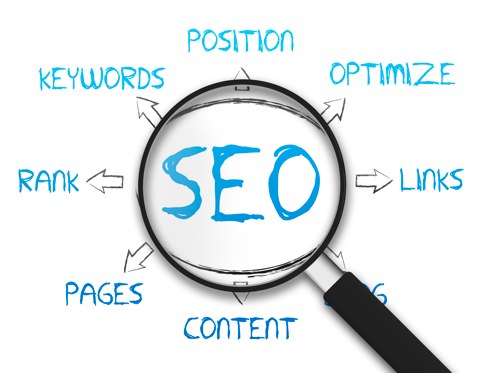
why seo is important
Why SEO is Important for Businesses?
SEO is the practice of optimizing your website and online presence to increase visibility and ranking in SERPs. SEO is a powerful tool for local businesses because it helps them connect with potential customers in their area who are searching for the products or services they offer. In this blog, we’ll explore the benefits of SEO for local businesses and how it can help them grow.
- Increased website traffic: SEO is one of the most effective ways to drive traffic to your website. By optimizing your website for search engines, you can increase your visibility in SERPs, making it easier for potential customers to find you online. This increased visibility can lead to more website traffic, which can, in turn, increase your chances of generating leads and sales.
- Better user experience: SEO involves optimizing your website to make it user-friendly, which can improve the user experience. For example, optimizing your website’s load time, ensuring it’s mobile-friendly, and providing high-quality content can help keep visitors on your site for longer periods, reducing bounce rates and increasing engagement.
- Cost-effective marketing: SEO is a cost-effective marketing strategy compared to other forms of digital marketing agency in singapore. SEO doesn’t require a lot of investment, and the returns can be significant. Unlike paid advertising, where you have to pay for each click or impression, the traffic generated by SEO is organic, which means it’s free.
- Better ROI: SEO can deliver a better return on investment (ROI) than other marketing strategies. This is because SEO targets people who are actively searching for your products or services, making it more likely that they will convert into leads or customers.
- Competitive advantage: SEO can give you a competitive advantage over your competitors. By optimizing your website for search engines, you can outrank your competitors in SERPs, making it easier for potential customers to find you instead of your competitors. This can lead to increased brand awareness and better market share.
- Long-term benefits: SEO is a long-term strategy that can deliver long-lasting benefits. Unlike paid advertising, which stops generating traffic once you stop paying, the traffic generated by SEO can continue to drive traffic to your website even after you stop actively optimizing your site. This means that the benefits of SEO can continue to deliver results long after you’ve finished optimizing your website.
- Increased visibility: SEO also increases visibility in SERPs. When your website ranks higher in search engine results, more people will see your business and be exposed to your products or services. This increased visibility can lead to more traffic to your website and more potential customers.
- Improved local search rankings: Local SEO is the practice of optimizing your website and online presence to rank higher in local search results. Local search results are based on the user’s location and show businesses that are geographically close to the user. Optimizing your website for local search can help you reach people who are searching for businesses like yours in your local area.
- More website traffic: When your website ranks higher in search engine results, you’ll get more traffic to your website. This traffic can come from people who are searching for your business directly or from people who are searching for related topics. The more traffic you get, the more potential customers you’ll have.
- Higher conversion rates: SEO can help you attract more high-quality traffic to your website. When people find your website through search engine results, they are often actively searching for the products or services you offer. This means they are more likely to convert into paying customers. By optimizing your website for SEO, you can attract more high-quality traffic and increase your conversion rates.
- Competitive edge: SEO is a highly competitive field, but it can give local businesses a competitive edge. By optimizing your website for SEO, you can outrank your competitors in search engine results and attract more customers to your business. This is especially true for businesses in competitive industries where a higher search engine ranking can make a significant difference.
- Cost-effective marketing: SEO is a cost-effective marketing strategy for local businesses. Unlike traditional advertising, which can be expensive and have a limited reach, SEO can help you reach a larger audience for a fraction of the cost. By optimizing your website for SEO, you can attract more potential customers to your business without breaking the bank.
In conclusion, SEO is an essential strategy and a powerful tool for local businesses that can help them connect with potential customers in their area.
Also Read —>> SEO Pricing
By increasing visibility, improving local search rankings, attracting more website traffic, increasing conversion rates, gaining a competitive edge, and cost-effectively marketing your business, SEO can help your business grow and thrive. If you’re a local business owner, investing in SEO is a smart decision that can pay off in the long run.
#1 Lead Generation Agency in Singapore | Omni Digital Pte Ltd
In today’s highly competitive business world, lead generation has become essential to any successful marketing strategy. The process of lead generation agency involves identifying potential customers or clients and converting them into actual customers or clients. In Singapore, lead generation has become even more important due to the country’s highly developed economy and competitive business environment.

lead generation agency
There are several effective strategies for lead generation in Singapore. Some of the most popular strategies are discussed below:
Social Media Marketing: Social media platforms such as Facebook, LinkedIn, and Twitter are excellent tools for lead generation. These platforms allow businesses to engage with their target audience and generate interest in their products or services. By creating valuable content and running targeted advertising campaigns, businesses can attract potential customers and convert them into leads.
Search Engine Optimization (SEO): SEO is the process of optimizing a website or online content to rank higher in search engine results pages (SERPs). By targeting relevant keywords and creating high-quality content, businesses can attract potential customers searching for products or services related to their industry with the help of SEO agency.
Email Marketing: Email marketing is an effective way to generate leads in Singapore. By building a targeted email list and sending personalized emails to potential customers, businesses can establish a relationship with their audience and encourage them to take action.
Referral Marketing: Referral marketing involves incentivizing current customers to refer their friends and family to your business. By offering discounts or other referral rewards, businesses can generate high-quality leads and increase their customer base.
Events and Webinars: Hosting events and webinars are a great way to generate leads in Singapore. By providing valuable information and networking opportunities, businesses can attract potential customers and establish themselves as industry leaders.
In conclusion, lead generation is essential for businesses in Singapore looking to grow their customer base and increase revenue. By utilizing effective marketing strategies with the help of digital marketing agency in singapore such as social media marketing, SEO, email marketing, referral marketing, and events/webinars, businesses can generate high-quality leads and convert them into loyal customers.
Benefits of working with a Digital Marketing Agency in Singapore
As Singapore continues to experience rapid growth in its digital landscape, the demand for digital marketing agency in singapore has skyrocketed. A digital marketing agency is a company that specializes in providing digital marketing services such as social media marketing, search engine optimization (SEO), content marketing, email marketing, and website design and development.
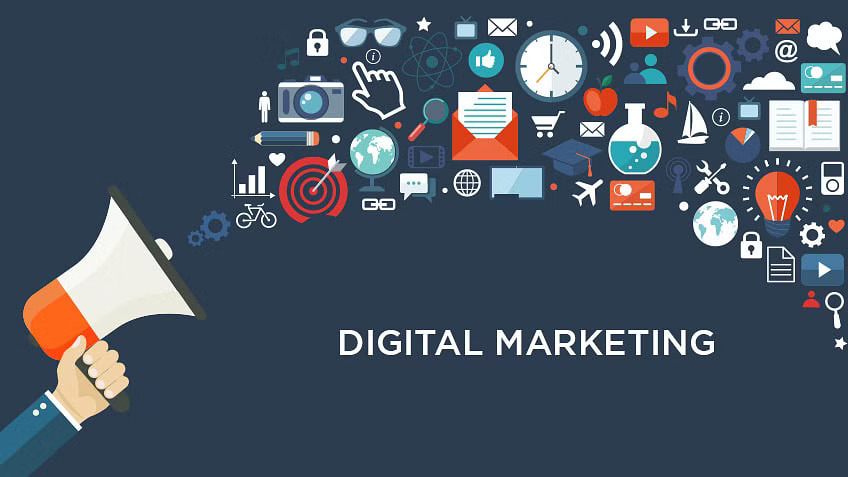
digital marketing agency in singapore
In this blog post, we will be exploring the benefits of working with a digital marketing agency in Singapore, the services they offer, and how to choose the right agency for your business.
Benefits of working with a digital marketing agency in Singapore
Expertise and experience: Digital marketing agencies have a team of experts who are experienced in providing digital marketing services. They are knowledgeable in the latest trends and technologies in the industry and can help your business stay ahead of the competition.
Cost-effective: Outsourcing your digital marketing needs to a digital marketing agency in Singapore can be more cost-effective than hiring an in-house team. You can save on the costs of recruitment, training, and benefits.
Focus on core business: By outsourcing your digital marketing needs, you can free up time to focus on your core business operations. This can help you to grow your business and increase revenue.
Services offered by digital marketing agencies in Singapore
Social media marketing – Promoting your brand and products on social media platforms such as Facebook, Instagram, LinkedIn, and Twitter.
Search engine optimization (SEO) – Optimizing your website to improve its ranking on search engines such as Google, Bing, and Yahoo.
Content marketing – Creating valuable and informative content such as blog posts, videos, and infographics to attract and engage your target audience.
Email marketing – Sending promotional emails to your customers and subscribers to keep them engaged and informed about your products and services.
Website design and development – Creating a website that is optimized for search engines and user-friendly.
How to choose the right digital marketing agency in Singapore
Look for experience: Choose a digital marketing agency that has experience working with businesses in your industry. They will be familiar with the trends and challenges in your industry and can provide better insights and solutions.
Check their portfolio: Look at the agency’s portfolio to see their previous work and the results they have achieved for their clients.
Consider their team: Look for an agency that has a team of experts who are knowledgeable in different areas of digital marketing. This will ensure that your business receives comprehensive and effective digital marketing services.
Check their pricing: Compare the pricing of different agencies to ensure that you are getting the best value for your money.
Conclusion
Working with a digital marketing agency in Singapore can help your business to grow and succeed in the digital landscape. By outsourcing your digital marketing needs, you can save time and resources, while receiving expert and cost-effective services. When choosing a digital marketing agency, consider their experience, portfolio, team, and pricing to ensure that you find the right agency for your business.
How Much Does SEO Cost in Singapore?
If you’re searching for the best SEO Services in Singapore but don’t know how much it will cost you, the one-line answer is – it depends on which kind of service you get from the Company.
Especially in the B2B industries, SEO services in Singapore have always been in demand. Today 70% of marketers remark SEO as effective marketing compared to other campaign channels such as PPC.
What is SEO?
SEO (Search Engine Optimization) is essential for online business. It is a practice of appearing in top positions in SERPs for relevant searches. SEO is also necessary for all shapes and sizes of companies. It can be the best way to achieve your business marketing goals and get potential traffic and sales for your business.
SEO or search engine optimization is the process of getting traffic or exposure from search engine results pages (SERPs) in a free and organic way. With the help of SEO, you can promote your brand or business through various strategies, including keyword research and content curation, such as blogs or articles, videos, web page content, and more! Many business owners find it beneficial to rank their websites on SERPs’ first page or position. Therefore, the use of proper SEO techniques or strategies is essential. Furthermore, organic search is the most crucial means for everyone to find and access online content.
Therefore, an effective SEO strategy is very important for enhancing your website’s quality and quantity of traffic. It is also vital for the smooth running of significant sites. There are several techniques used to improve a website’s ranking, including
- Optimise titles and meta tags using relevant keywords and phrases
- Building quality backlinks
- Creating keyword-rich content
- Image optimisation
- URL optimisation
- More!
Additionally, SEO plays the most vital role in online marketing strategy. Therefore, you can boost your chances of driving traffic and generating leads by improving your website’s ranking.
Why Should You Use Effective SEO?
- Brand Awareness – A website with a high ranking attracts more visitors interested in learning about the business and its products.
- Your Competitors – Beat your competitors in organic search results might help boost the ranking position of your company/online business in your marketplace.
Here are Some of the Essential Benefits of SEO:
- Increase traffic
- Elevate your business to the next level
- Brand promotion and awareness
- Increased website usability
- High ROI
- Better conversion rates
- Beneficial for social media
Types of SEO
On-page SEO, Off-page SEO, and Technical SEO are the three types of SEO you require for a well-rounded organic search strategy to improve the website’s ranking position and traffic.
On-Page SEO:
On-page SEO, sometimes called On-site SEO, is optimising pages to improve a website’s rankings and enhance organic search traffic. With the help of on-page techniques, we can get visibility in search engines and increase traffic. The on-page strategy is structuring or building your website content to be user-friendly and search-engine-friendly.
Why is On-Site SEO Important?
For search engines to understand your website and its content and determine whether it is relevant to a searcher’s query, on-page SEO, also known as on-site SEO, is essential.
On-Page SEO Includes
- Meta Tags
- Content Optimization
- Image Optimization
- Keywords Optimization
- Internal Linking
- External Linking
- URL Structure
- Website Structure
- Heading Tags
- And More!
Off-Page SEO
It is also a method for improving your website ranking (SERPs). It also helps to boost the credibility, authority, and reliability of your website. Additional benefits of off-page SEO are increasing traffic, page and domain authority, and brand awareness. In simple terms, off-page SEO helps get quality backlinks from other sites.
Off-Page SEO Activities:
- Brand Mention
- Commenting
- Local Citation
- Video Submission
- Press Release
- Google My Business
- Forums
- Content Sharing
- Influencer Outreach
- Guest Posts
- Broken Link Building
- Social Network
- Social Bookmarking and
- More!
Technical SEO
In the whole process, technical SEO is an essential step. It is the pillar of improving a website’s speed, crawlability, and readability for search engines. Technical SEO is a part of on-page SEO, which is mostly concerned with improving elements such as optimization of site structure, website speed tests, and more! Its work affects search engine crawling and indexing either directly or indirectly.
By improving technical issues, you can help search engines to crawl and understand your website. If you succeed in doing this, search engines may reward you with higher rankings or even richer results.
Technical SEO Includes
- Page Elements
- XML Sitemaps
- Optimise Site Structure
- Redirects
- Optimise Robots.txt
- Optimise URL Structure
- HTTP Header Responses
- Fix Duplicate Content Issues
- Optimise Canonical URLs
- Website Speed
- Mobile Friendly Test
- Register your site with webmaster tools
- And More!
Best SEO Services & Pricing in Singapore for Businesses:
Many SEO companies provide basic SEO services or even preliminary services at the highest price. For this reason, many customers have suffered from financial loss without seeing any SEO results for their business.
Remember that SEO (Search Engine Optimization) plays an essential role in every digital marketing strategy and for all businesses and industries. It also helps with brand awareness, client acquisition, and overall business performance. That’s why we need to know how SEO charges work and the various package structures that an SEO company provides.
Below, we have listed some important factors that come into consideration when deciding the actual costs of SEO in Singapore:
1. Size and Type of Business:
See, the price you pay for SEO services will depend on the size & type of your business and the number of services you require. SEO pricing also varies from Company to Company, so it’s essential to remember that you get the best results when you pay for services when it comes to SEO. When choosing a good SEO Company, don’t compromise quality work for “low-grade SEO services. You should choose a top SEO company that offers top-quality SEO services in Singapore. Also, your goals should determine how much you should spend on services.
2. Competition Research:
This process can play a major factor in deciding the best SEO pricing in Singapore. Your competitors also have the same niche website and are vying for the top spot in the search engine result page (SERPs).
Whether your desired keywords have strong competition, improving your website position or getting the number one spot will require more effort and time. However, SEO companies might charge extra. Every SEO professional will begin work with competition research in your niche.
3. Industry:
Companies operating in a competitive industry often face hurdles when trying to rank for the same keywords on the website. Therefore, SEO experts must work hard to optimize everything to rank your website in your niche.
4. Services & Benefits:
All SEO Companies will not give you all the services, such as campaigns, content distribution, and more. That’s why the actual price will largely depend on the best-quality service of SEO and the benefits included in the campaign.
5. Time:
SEO companies usually provide the best results within approx. 3 to 5 months. They will require additional cost if you want results in a quicker timeline.
6. Guarantee:
Whether an SEO agency informs you that they can give you a guarantee to rank your website on the top position in the SERPs as it is not possible. It’s all probably a ploy to charge the high pricing for SEO services. Never forget that SEO organic results can never be 100% guaranteed. There are too many factors in search engine optimization (SEO).
Which SEO Pricing is Best for Your Business?
Most SEO companies in Singapore charge a fixed monthly fee that varies according to the work hours, requirements, and difficulty.
| Type | Starting Cost (Monthly, Approx) |
|---|---|
| Standard Level | $500-1300 |
| Mid Level | $700-1500 |
| Top Level | $1500-3000 |
| Avg. Hourly Rate | $50-$250 |
On the other hand, when it comes to the SEO pricing model, most SEO agencies in Singapore follow these SEO pricing packages that are including
- project-based,
- monthly retainer, or
- hourly consulting
Additionally, the SEO cost options you select typically depend on your budget, the amount of work required, and how flexible you want to be with your SEO work. Let’s talk about these four SEO pricing packages in detail below:
| Type | SEO Services | Average Cost, Approx. |
|---|---|---|
| Monthly SEO | SEO Audit Analytics Setup Routine Reporting Keyword Research Keyword Integration On-Page Optimizations Off-Page Optimizations Technical Optimizations Content Creation |
$1500 – $5,000 per month |
| SEO Consulting | SEO Audit SEO Recommendations SEO Implementation Routine Reporting |
$100-$300 per hour |
| Project-Based SEO | SEO Audit Project-Specific Optimizations Routine Reporting |
$5,000 – $30,000 per project |
Important note: Above, we have described just an estimate of SEO pricing in Singapore and the services included in the same package. However, it will vary from company to company and the type of service availed by the user.
Monthly Retainers:
With a monthly retainer, you pay the agency or freelancer a fixed amount per month, and they will handle all of your SEO needs regularly. That is why; it is one of the most common ongoing SEO pricing models.
Project-Based:
Project-based pricing models are similar to contract-based services. It allows customers to pay a set charge for custom SEO projects. In Singapore, approximately project-based SEO services can run you anywhere from $1,000 to $30,000.
Note: It is not an actual price of project-based pricing models; it’s just an estimated price.
Hourly Consulting:
You can pay agencies an hourly fee for SEO services in hourly consulting. Hourly SEO consulting fees range from $100 to $300 per hour approx.
How Much Should You Spend on SEO Services?
- The cost of SEO services will vary depending on the size of your company and the scope of the services you need.
- The SEO project will be more involved the more prominent your website is. This means you should pay more for your SEO services.
- It’s also important to remember that SEO is a continuing strategy.
- You should consider a monthly SEO plan to keep your website fresh and continually rank at the top of the search results.
- In the end, your goals should decide how much you should spend on SEO services.
Best SEO Company in Singapore: Generate More Traffic
1. You should choose the right SEO Company to improve your business reputation. A bad SEO agency can destroy your business reputation. You don’t want to destroy everything you have spent your efforts and time on building a business reputation.
2. You should always go with the right SEO agency for your business that fits your budget.
Take a look at other factors that you should consider before deciding your SEO budget:
- Choose quality over price.
- Pursue references from others.
As we previously discussed, SEO services and pricing in Singapore vary from Company to Company, and many essential factors affect the cost. That’s why choosing the right SEO agency is essential to make or break your business reputation. So, take your time doing your research and choose a professional company for SEO that will benefit your business.
You can contact our digital marketing specialists at Omni Digital to discuss the best SEO services for your business at a competitive price. As the leading Google marketing agency in Singapore, we also provide the best SMM, PPC, and TikTok marketing services to enhance your business. Check out our website today to learn more about our other digital marketing services.
Fintech Marketing Case Study
Founders Make Some Noise
Tide is a UK financial platform providing banking services for small and mid-size enterprises (SMEs). As part of its strategy to target entrepreneurs and business owners, the brand ran an impactful campaign ‘Founders Make Some Noise’. The ad features three business owners (who are also Tide members), highlighting how the platform can help them spend less time on admin and more time on doing what they love. The 30s video ad successfully captured people’s attention and inspired them to take action with empowering messages and real-life stories.
Takeaway: Deliver a relatable and compelling story in your videos. In addition, short videos always perform better than lengthy ones, so aim to get your message across within 30 seconds.

Coinbase’s SEO Strategy
Coinbase created a learning space providing answers to all things crypto: Guides and explainers, tips, and insights on the crypto ecosystem. While most blogs about crypto are complicated and overwhelming, Coinbase’s blogs are well-structured and precise with just enough information – everyone from beginners to experts can digest it. They include just a few backlinks in key phrases, so readers will not be annoyed. This content strategy helped Coinbase cut through the noise and beat its competitors. Their website ranks high in ToFu keywords such as “what is cryptocurrency,” “dogecoin,” and “how to buy NFT.”
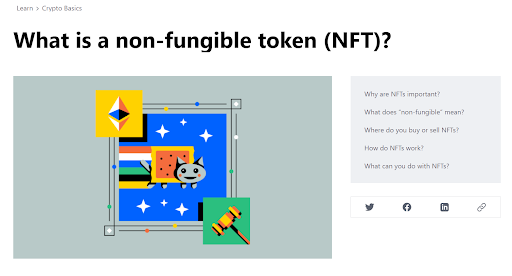
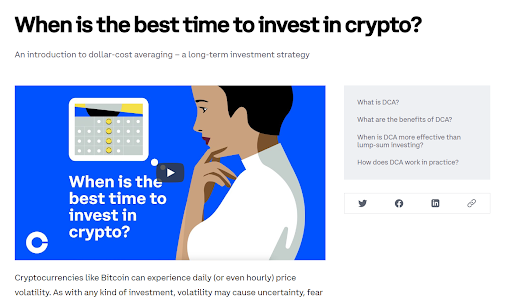
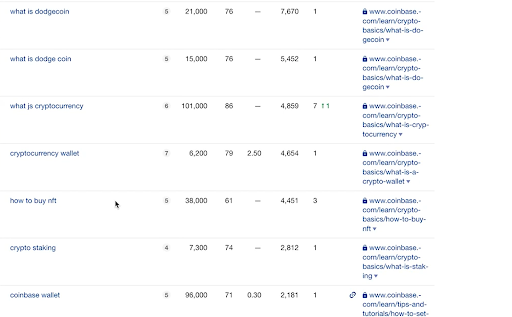
What is worth noting is that Coinbase has a different content format in the How To Buy section. It is straightforward with a short intro and a clear step-by-step guide on how to buy crypto. This is because a person searching for this query is likely to be in the buying mode – they already know cryptocurrency, and it is unnecessary to explain it again. Besides, it is said that Google loves showing lists for the “how-to” keyword. Although Google never confirmed it, a step-by-step instruction really makes it easier to see and digest. These tactics helped Coinbase rank high in important ToFu keywords like “how to buy Shiba Inu coin,” “how to buy dogecoin,” and “how to buy safe moon.”
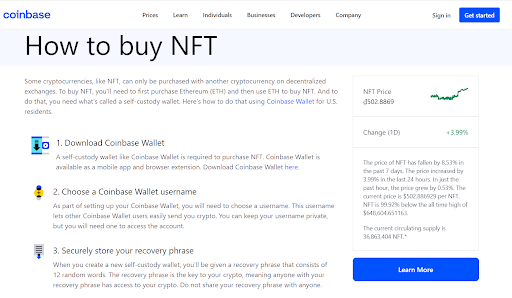
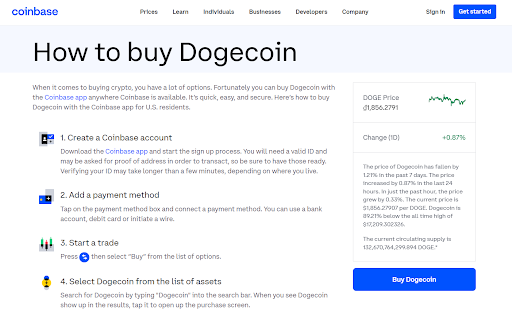
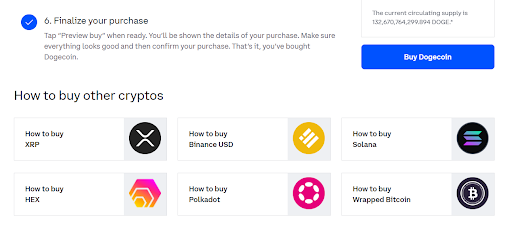
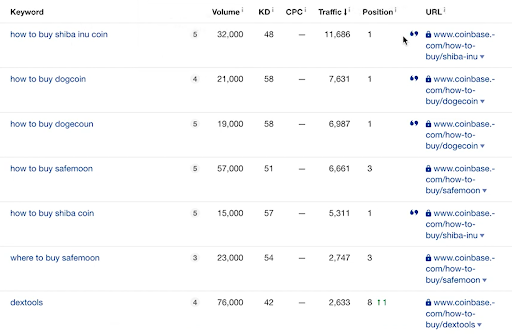
Takeaway: Understanding user search intent is essential if you want to rank high on Google. While it is great to optimize for keywords that drive traffic, ensure your content provides real value and is relevant to user search queries.
Money Pie
Acorns is a Fintech company that specializes in investment and banking. Launched at the end of 2014, the company is currently serving 8.2 million customers partly thanks to its genius branding and marketing strategy.
In April 2022, Acorns introduced a new show “Money Pie” where they partner with Angela Yee to bring financial education to YouTube. They interview some of entertainment’s big names about their money stories like experiences with investment, biggest financial regret, and how to bounce back after bad business deals.
The Money Pie show is a good combination of influencer marketing and educational content marketing. It aims to resonate with prospective users, with them, and become a to-go source for all things money and investment. Before “Money Pie”, the company partnered with industry experts to frequently conduct Q&A sessions and share money advice on Instagram and Youtube.


Takeaway: With the complicated nature of FinTech products, creating value-driven content plays a crucial part in educating customers and establishing credibility. Experiment with different kinds of content like video marketing, storytelling, influencer endorsement to find out what appeals the most to your target audience.
OVER TO YOU
With TikTok marketing, it is very important to find the right trend and content. Creativity plays a big role in this platform, together with authentic and entertaining content.
When you first get started, you would probably feel like your content doesn’t have the attention it deserves. Our advice is to be consistent. Keep posting on a regular basis, follow the TikTok algorithm and take advantage of the latest trends, and you are sure to be rewarded!
HOW CAN WE SUPPORT YOU?
If you are looking to scale your Fintech or Finance business with online marketing, we’re here to help. Contact us at alex@omnidigital.com.sg or visit www.omnidigital.com.sg
Instagram: @omnidigitalsg
TikTok: @omnidigitasg
LinkedIn: Omni Digital Pte Ltd
Personal LinkedIn: Alex Chan, CFA
The Marketing Funnel: Stages, Strategies, & How to Optimize
Best Fintech Marketing Strategies 2022
Content Strategy
Do you know that 47% of B2B buyers consume 3-5 pieces of content prior to engaging with a salesperson? A survey from Demand Gen Report indicated that B2B buyers prefer content that educates rather than just sells. They are looking for advice that helps them benchmark their strategies and success stories from others facing the same challenges. Below are seven types of content to build trust while educating your prospective customers:
- Case studies
- White papers
- Webinars
- Ebooks
- Video/motion graphics
- Infographics
- Podcasts
The same report also indicated that readers are shifting toward visual and easily digestible formats due to the large amount of content consumed every day. If your website is struggling with low-quality traffic, try writing a mix of both long-form and short-form content, and make it more engaging by including infographics, charts, video, and case studies.
An example of an effective content marketing strategy is Wealthsimple, one of Canada’s leading Fintech companies. The company created a digital magazine that allows readers to easily digest news about investment, business, cryptocurrency, and other emerging topics. As visuals are proven more powerful than text, the company created a unique look for all its marketing channels (website, app, blog, etc.) with eye-catching designs, infographics, and custom illustrations. Its strong focus on visuals helps the brand resonate with the mass millennials market and become the go-to source for investment and money advice.



Lead Magnets
Lead magnets are used to generate a steady stream of leads that later can be qualified and nurtured through the marketing funnel. They are basically anything that offers real value to customers, from white papers and reports to case studies and free trials.
In a B2B context, case studies are one of the most effective ways to promote your products and services. In fact, up to 73% of B2B buyers viewed a case study during their research since it provides compelling proof of a company’s abilities. It also helps brands build trust as people value the opinions of their peers over what businesses say about themselves. .
Pro Tip: A great way to create high-converting lead magnets is to put your content onto a landing page and direct traffic to it through paid ads. Another way is to leverage exit-intent pop-ups, which fit well with various content types such as webinars, case studies, and ebooks. Ensure that your pop-ups are easy to close and have a clear CTA.

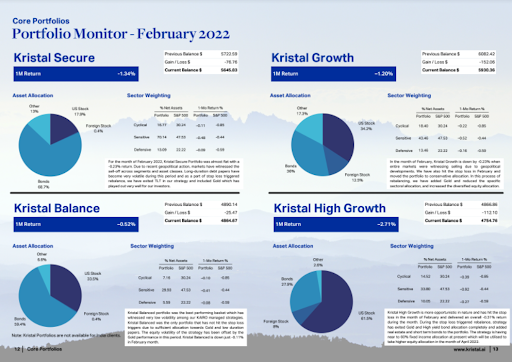

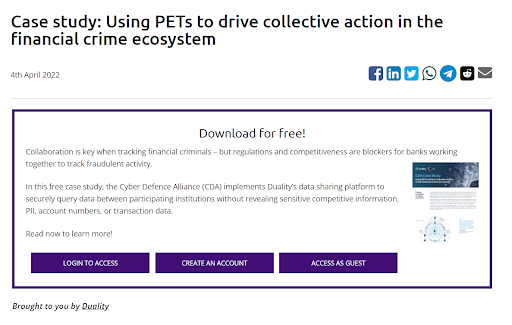
Hosting webinars is a common strategy for building awareness and reinforcing brand authority. Throughout the events, you can establish themselves as experts within a specific area, reach out and develop meaningful relationships with prospects. You can either team up with industry-related influencers to guest on your webinar or register to become a speaker at major events.
Founded in 2017, ADDX is a leading digital securities platform for private market investments in Singapore. The company regularly hosts webinars and invites external speakers to share on various topics like Private Credit, Web 3.0, Security Token. Participants need to register with their business information to join the webinar. They also share the events on different marketing channels to maximize exposure.
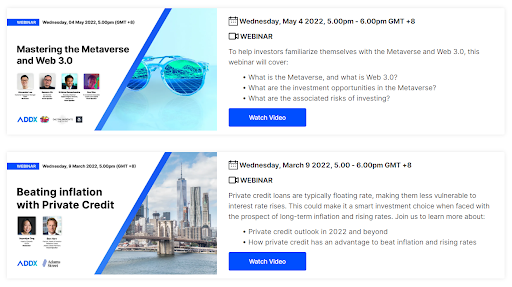

Email Marketing
Email marketing remains the leading marketing channel for nurturing potential and existing customers. Email Marketing Industry Report published by Econsultancy reveals that email marketing was the top-rated channel for ROI, followed by SEO and paid search.

Email marketing automation is a tool to help businesses personalize email at scale. It can leverage user data to segment their contacts, set up behavioural triggers and workflows to nurture leads and maximise the impact of their campaign. Accordion to Campaign Monitor emails with personalized subject lines are 26% more likely to be opened, and marketers have found a 760% increase in email revenue from segmented campaigns.
There are three ways that Fintech companies can use email automation to their advantage:
- Educate customers: Share educational content such as guidelines, checklists, downloadable templates, and reports.
- Entice and excite customers: Free subscriptions, customer referrals, or anything that makes them excited and triggers action.
- Win back lost customers: Set up an automated re-engagement campaign when customers haven’t engaged with your website or email for a while. It should include something that reinforces the company’s value and gives them an incentive to come back to your website.
SEO Strategy
Search engine optimization (SEO) is a long-term digital marketing strategy that helps websites rank higher in search engines, primarily on Google. According to research by Ahrefs, more than 90% of online content gets zero traffic from Google. So how can you be a part of the minority that gets organic traffic from Google? Here are five important factors that can have a significant effect on your Google ranking:
Keyword Research
We often recommend businesses utilize long-tail keywords, as they are less competitive and can result in higher conversion rates. In fact, long-tail keyword searches were found to have a click-through rate 3-6% higher than generic searches. This is because long-tail search queries typically occur when customers are moving down the sales funnel.
It is also important to target keywords for different stages of the funnel. For example, ToFu keywords should be broad and general as it aims to build awareness in the early buying stage. Meanwhile, BoFu keywords should be more specific and focus on how your product can effectively solve customers’ pain points.
User Search Intent
User Search Intent is the user’s main goal when typing a query into a search engine. Your content must stay relevant to user intent to rank high on Google. For example, someone searching for “what is bitcoin” is in research mode. They want to see educational articles that help them understand it. On the other hand, a person searching for “buying bitcoin in the US” is likely to be in buying mode, so Google responds to it by showing a long list of cryptocurrency platforms. More about user search intent will be shared in the case study.

Backlinks
While we all understand the importance of backlinks, it is interesting to note that not all backlinks are equal. There are two factors that contribute to an effective backlink: Authority and Relevance. Backlinks from trustworthy, authorized websites would hold more value than low-authority ones. Similarly, backlinks from industry-related websites can add more credibility to your content and move the needle in the search results.
Fresh Content
Freshness is more important for some queries than others. For example, the top results for “Singapore news” are articles published within one day. It even shows Top Stories with articles published from the past few hours. This is because Google wants us to stay updated with the latest news.
Keeping your content fresh by updating the latest Fintech trends and technology is a great way to drive organic traffic and become a part of the online conversation.
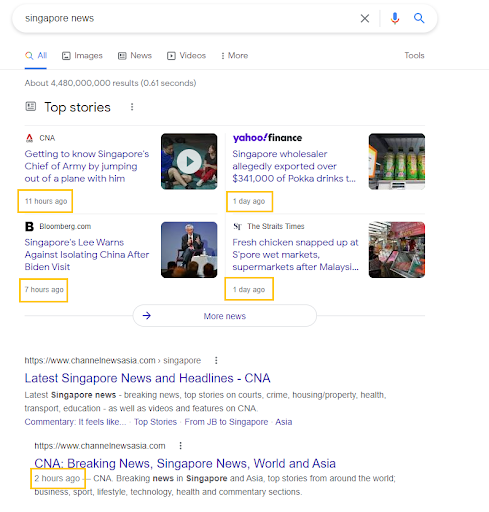
Page Experience
Page experience is another factor that Google takes into account when ranking a website. It is a set of metrics that measure how users perceive their experience with a website beyond its information value. Here are some of the metrics suggested by Google’s developer document:
- Mobile-friendliness: Users should be able to access the page via mobile.
- Security: The page should run on HTTPS.
- Browsing safety: Safe browsing checks for security issues including malware, deceptive pages, harmful downloads, and uncommon downloads.
- Loading performance: A fast server response time will result in better performance.
- Presence of intrusive interstitials: The content on the page is easily accessible to the user. This might include aspects like pop-ups and ads that intrude on the main reading experience.
Social Media
Having a Facebook page, a LinkedIn profile, or a Twitter account allows people to engage with your business online. In fact, companies with the most robust omnichannel customer engagement strategies retain an average of 89 percent of their customers compared with 33% for companies with weak omnichannel strategies.
Maintaining multiple social media channels can be time-consuming, so it is essential to invest in the right channel. LinkedIn is a go-to platform for B2B businesses. 82% of B2B marketers use Twitter as a part of their social media marketing strategies. Facebook and Instagram are powerful marketing channels for targeting young audiences and building brand awareness. Facebook is an excellent choice when it comes to audience targeting capabilities.
Step is a mobile banking service that targets millennials and Gen Z users. It has amassed over 2 million users since its launch in 2020 thanks to its hyper-focus on teens. The brand developed a solid social presence on various channels including Instagram, Twitter, TikTok, and Youtube. To resonate with young customers, their content covers various topics from money education, product updates to interviews with Gen Z founders, mini-games, TikTok challenges, or even horoscopes. Step’s social media marketing strategy is a great example of knowing your target audiences and building an emotional connection with them.
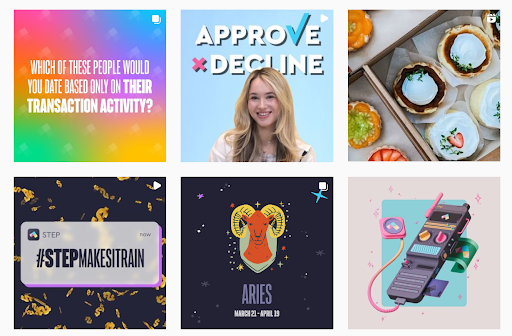
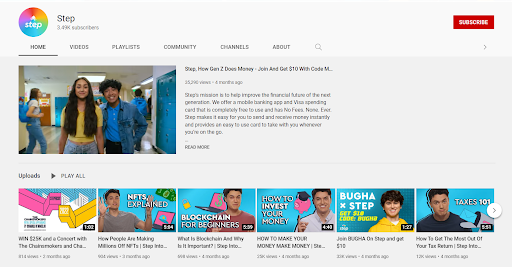
Paid advertising
Paid advertising is a digital marketing method that enables you to reach your targeted customers instead of waiting for them to find you. You can target them based on a wide range of criteria such as customer interest, demographics, search terms. SEM (Search Engine Marketing) and social media ads are the two most popular paid ad strategies at the moment. They can work with any budget and work well if they are combined with each other.
SEM
Paid search, or SEM, drives traffic to your website by getting your ads to show up on the search engine results pages (SERPs). Most businesses use the pay-per-click (PPC) model since it helps them reach their target audience and track their performance. Google Economic Impact Report found that PPC visitors are 50 percent more likely to make a purchase than organic visitors.
To increase the effectiveness of your ads, here are some factors to consider:
- A/B Testing: If you’re running paid campaigns for the first time, it is important to test different elements in your ads (audience interest, headline, images…). A/B testing allows you to see which ad performs best and optimize your campaigns over time.
- Google ad pricing is very flexible, so you can spend as much or as little as you want depending on your budget. However, as your bid for the keyword partially determines your ad ranking, it should be high enough to rank well and enable your ads to run efficiently.
- Determine the right keywords: Targeting different keywords for different stages in the buyer’s journey can help optimize the conversion. For example, someone searching a general query like “digital payroll solutions” is probably in the awareness stage. A landing page introducing your product and its benefits is more effective than a case study.
- Retargeting ads: Google has retargeting technology that allows brands to show ads to people who have already engaged with their business or searched for related terms on Google. For example, when a man leaves your website without making a purchase, you can display ads for the product that he previously interacted with. This is a great way to remind customers about your brand and keep you on top of their mind when they decide to make a purchase.
- Use tools to make your ads work better:
– Keyword research: Google Keyword Planner, Ahrefs Keyword Explorer, SEMrush.
– Campaign management: Google AdWord, Google Ads Mobile App.
– Tracking: Google Analytics, Google Ads Performance Grader.
Omni Digital is a full-service digital marketing agency that helps businesses scale through paid search and social. Our team of experts can help you set up, manage and optimize your ad campaigns to get the most out of your marketing budget.
Social media ads
Like PPC ads, paid social media ads use a bidding model to display ads to potential customers based on their behaviors and interests. If you are new at PPC, we recommend you spread out your campaign budget to multiple channels and see which one brings the most conversion. Running social media ads is an ongoing process with continual testing and refinement, so it will take a while to identify your best-performing channels and what messaging resonates the most with the audience.
Pro Tip: According to Target Marketing, 68% of marketers surveyed invest in social media retargeting. On Facebook alone, retargeting ads are 76% more likely to get clicks than regular ads. If your ads are not getting enough attention on social media, allocating some budget for retargeting can keep your brand at the forefront of your customers and increase your conversions.
1. Facebook Ads
Google Ads and Facebook are the two platforms that most companies start with. Instead of targeting keywords like Google Ads, Facebook ads are based on the audience’s behaviors, interests, or actions they’ve taken in the past. It has a complicated algorithm working in the background to make your ads visible to your target customers.
While the engagement on Facebook seems a bit cold, the secret to successful Facebook ads lies in wise audience targeting and retargeting ads. As of May 2022, the average CPC across all industries on Facebook was $0.931. However, a lot of advertisers don’t choose to pay for clicks on Facebook. They prefer paying for every 1,000 impressions (CPM). That said, the average CPM in May 2022 was $12.53.
Pro Tip: The Ad Library provides a comprehensive, searchable collection of all ads currently running on Facebook. You can use this tool to look up your competitors’ ads, when they run them, what ad types they use, and how they deliver the messages.
2. Instagram Ads
Just like Facebook, Instagram is great for building brand awareness. It’s a highly visual platform that includes both images and videos. In fact, video content has grown to have a major presence on the platform, as organic video posts and video ads get 38% more engagement than images on Instagram. Instagram has recently provided immersive full-screen mobile video opportunities, so marketers can have several places to post their ads: Instagram feed, Stories, and Reels.
If you’re wondering which is the best route for ads, AdEspresso suggests Instagram stories as it is relatively cheap but comes with high engagement. You can A/B test Story video ads and Reels ads to find out which one performs better for your objectives.
If you don’t have the time or resources to produce a video, we’ve got good news for you. A study by Social Insider found that carousel posts bring higher engagement rates than videos or images. Additionally, carousels with eight or more slides tend to perform better. When making use of all ten slides available, the average engagement rate goes over 2%.
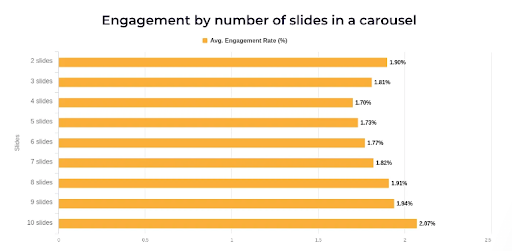
Pro Tip: Carousels with messages that encourage viewers to swipe left will result in higher engagement. These terms include any variation of swipe, swipe to see, swipe over, questions about which photo people like best, or even referrals to a slide number for extra information. This little detail in the caption boosts the average engagement from 1.83% to 2% per post, so keep this in mind when creating your carousel.
Here is a simple example of an Instagram Story Ad. Coinbase created a 15s explainer video providing a brief introduction of the company and enticed people to swipe up and explore it for themselves.
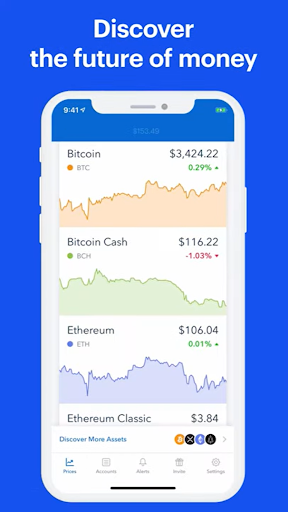
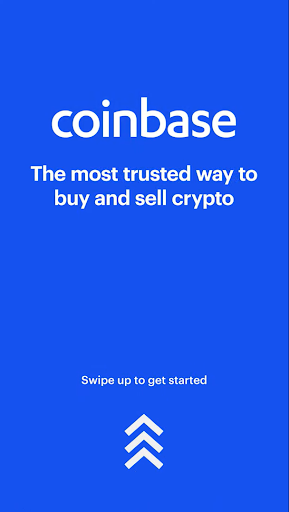
3. LinkedIn Ads
LinkedIn is a social networking platform for work professionals. Unlike other social media platforms, LinkedIn users tend to be work-focused, and you can target them based on their job titles, the industry they’re working in, where they work, and so on.
According to a report by The B2B House The CPC benchmark for Linkedin is $5.58 globally as of May 2022. If you’re targeting senior decision-makers, the average number can goes up to $6.40. Here are some of the most common job functions that marketers target on Linkedin, together with average CPC benchmarks:
- Accounting: $5.00
- Business Development: $6.30
- Education: $4.90
- Engineering: $5.10
- Finance: $6.90
- Human Resources: $6.00
- information Technology: $7.90
- Marketing: $6.80
- Media and Communications: $5.60
- Operations: $5.70
- Product Management: $7.30
Pro Tip: LinkedIn advertising tends to be pricier than other channels. Instead of running ads on this platform, having an active and solid presence on LinkedIn is a good alternative.
4. Youtube Ads
YouTube ad campaigns are hosted within Google Ads, so running Youtube ads is easy if you have already been familiar with Google Ads. Because video ads have the ability to capture attention better than display ads, brands are utilizing Youtube videos to increase their brand awareness and engage with potential customers.
Although YouTube ads function quite the same as the Google Ads interface, it has different bidding strategies. Below are some bidding strategies for Youtube ads:
- CPV (cost per view)
- CPM (cost per thousand impressions)
- maximize conversions ( when using the “drive conversions” video campaign subtype)
- Target CPA (tCPA) (when using the “drive conversions” video campaign subtype)
CPM is an important indicator when it comes to Youtube advertising. Companies can use this metric to compare the effectiveness of search engine ads or ads on different social media channels. The average CPM on Youtube varies a lot by industry. In 2021, the average YouTube CPM rate in Singapore is $17.
As a whole, a Youtube ad is a good choice for driving awareness and consideration (ToFu and MoFu stage). A video is also a great content source as it can be utilized for almost any media channel: Website, social media, or email marketing. However, brands should pay attention to the length of your ad. A video longer than 15 seconds will be skipped after 5 seconds, so ensure your videos grab the attention in the first few seconds.
If you are looking to grow your online presence on social media, we are here to help. Our team of social media experts will work closely with you to create and implement your social strategies, so you can generate sales, drive traffic, increase registrations and more.
Referral or Influencer Marketing
Referral marketing is a popular growth tactic that leverages word of mouth and recommendations. Below are some examples of how Fintech brands are implementing referral programs to get more referred customers:
Coinbase: As part of the launch strategy, Coinbase introduced a generous referral program to encourage users to spread the word about the app. When a referee initiated a buy or sell of a minimum of $100, Coinbase would pay a $10 commission to both the referee and referrer. This commission program attracted a lot of industry bloggers and influencers to sign up and promote Coinbase through their channels.
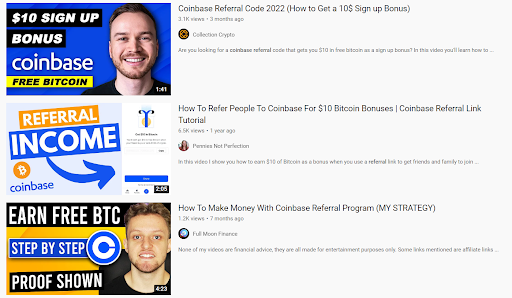
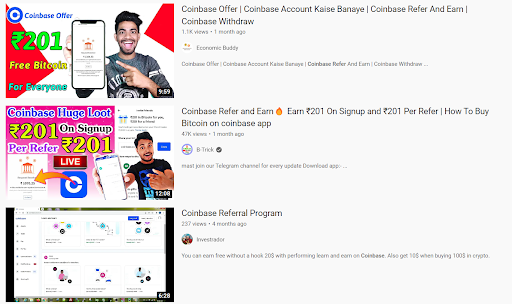
PrizePool: Launched in August 2020, PrizePool has its way to make saving money more fun: The company offers cash prizes guaranteed to total $50,000 every month based on your savings and spending habits (they publish a list of top winners every month). Interestingly enough, when you invite your friend to use PrizePool, and that friend wins the prize, you will also win 10% of the prize!


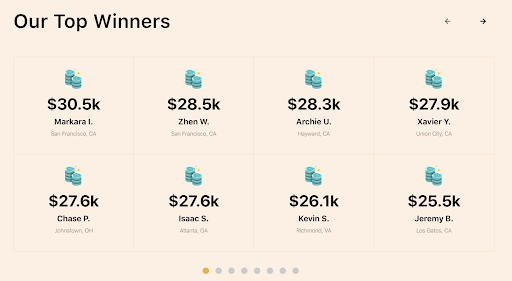
Revolute: Revolut is one of the most valuable Fintech startups in England. They created the Revolut Pioneer Program to increase brand exposure by partnering with carefully selected influencers and offering them attractive referrals and incentives.
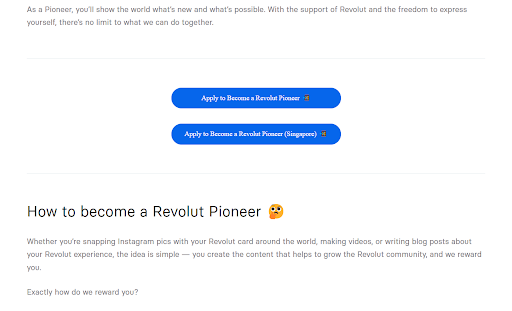
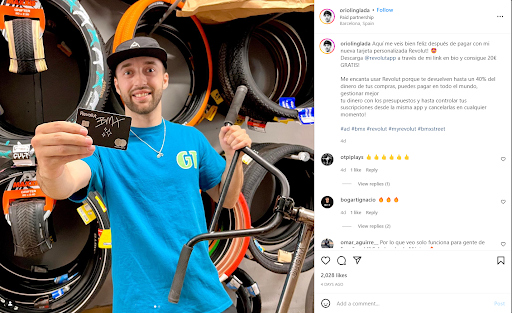
How to Build a Conversion Funnel That Will Triple Your Profits
What is Fintech Marketing?
Fintech is one of the fastest-growing industries with companies innovating in many areas of finance and billions of investment dollars flooding into the ecosystem. According to KPMG, the global fintech investment was $105 billion in 2020 and is expected to reach $179 billion by the end of 2022 with around 30,000 FinTech startups worldwide. In addition to startups, established firms have been investing in disruptive technologies to improve their financial services and retain a solid position in the Fintech industry.
Along with the steep competition, Fintech companies pose a number of challenges: Lack of trust and credibility, cybersecurity, increasing regulation, changing customer needs and behaviours. While developing great products and services is important, it is crucial to deploying the right marketing strategy to cut through the noise.
In recent years, we have seen significant changes in the way Fintech firms run their marketing operations. Some have managed to stay ahead of the curve with their effective sales funnel and unconventional approaches to nurture customers through different stages of their journey. In this ebook, we will look into the time-tested marketing strategies for Fintech companies and lessons learned from their successful marketing campaigns.
Build The Right Sales Funnel
Do you know that up to 73% of leads were NOT sales-ready and 79% of leads never converted into sales? Collecting a long list of marketing qualified leads (MQLs) sounds impressive, but it does not necessarily bring more sales. This raises the question of how to build an effective sales funnel that can help you turn your prospects into fully engaged customers.
A sales funnel starts with potential customers being aware of your product and ends with them taking action on it. There are typically three main stages in the sales funnel: The Awareness Stage, Consideration Stage, and Decision Stage. Each stage is tied directly to a buyer’s intent and with different strategies to move them down the funnel.
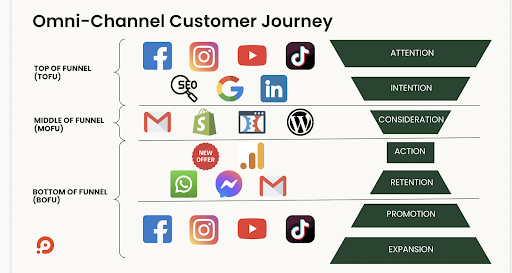
Strategies for Every Stage of the Sales Funnel
Top of the Funnel (ToFu)
This phase, also known as the Awareness Stage, is when your prospects are doing educational research to understand the problems and different solutions. They might find you in various ways, like your SEO efforts, social media, and paid ads. Here are several ways to keep your company at the forefront of your potential customers:
- SEO/Blogging: An effective SEO strategy would improve your website’s placement in search results and help it appear on Google’s first page.
- Lead magnets: Lead magnets are incentives in the form of exclusive content (eBook, report, template).They are effective for capturing and nurturing leads.
- Social media: Research showed that 72% of B2B buyers use social media to look for solutions to their problems. If social media is not something you are utilizing to increase your company’s visibility, then it may be time to start.
- Paid ads: Paid ads are the quickest way to allow potential clients to discover your company. More on this later.
Middle of the Funnel (MoFu)
The MoFu stage is when customers are considering different solutions they found. This is when you should start engaging more with your customers through email marketing, paid ads, and retargeting ads. Here are some effective MoFu marketing strategies to focus on:
- Email marketing: Email marketing works well for lead generation and lead nurturing. It can effectively promote products and services through different email campaigns and audience segments.
- Retargeting ads: Retargeting ads are a form of paid ads that target people who have engaged with your business before or are a contact in your database. According to Invesp, retargeting ads result in 10 times more clicks compared to standard display ads. More on retargeting ads later.
Bottom of the Marketing Funnel (BoFu)
The final stage is when your customers make the purchase decision. At this stage, the sales and digital marketing agency in Singapore team should work together to convert leads into customers. Content such as case studies, product comparisons, testimonials, and free demos helps reinforce customers’ confidence in your product and encourages them to go for a sales call. It is advisable to continue running retargeting ads highlighting your products or giving a favorable offer.

